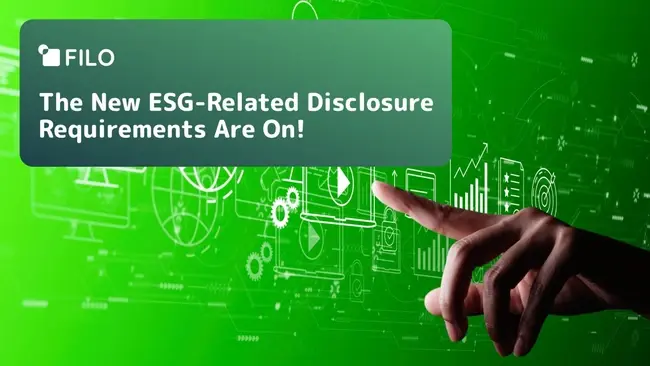
In 2024, EU businesses will face a significant change in non-financial reporting: the Corporate Sustainability Reporting Directive (CSRD) is coming into force. The CSRD marks the first time the European Commission established a universal reporting framework for non-financial data. It is a significant shift in how companies disclose their environmental, social, and governance (ESG) impacts.
Target Audience
CSRD affects around 50,000 companies, including those listed on EU-regulated markets, unlisted EU companies of a certain size, and unlisted EU parent companies with specific holdings. The reporting will start gradually based on the company type:
2024: Companies already covered by the NFRD
2025: Large companies
2026: Listed SMEs
2028: Non-EU companies
A game-changing shift
One of the primary goals of the CSRD is to address the lack of consistent and comparable sustainability data. Under the CSRD, companies will be required to disclose their sustainability strategy, policy, and measures associated with the environment, including climate change, reporting on greenhouse gas emissions, energy consumption, and other environmental indicators.
Specifically, companies will have to undertake a ‘double materiality assessment’ to identify which sustainability matters are most material to the organization and its stakeholders. This shift towards combining business strategy and sustainability is a game-changer that brings the ESG agenda to a higher level of concern in the organization, increasing transparency and commitment.
The challenge for companies
A recent PWC survey stated that “under the CSRD and the EU-Taxonomy, companies need quantified data on the value chain, e.g. carbon footprint of the products purchased, life cycle analysis from cradle to grave, recycling quota at the end for the value chain, human rights issues, etc.” Though measuring non-financial metrics is not new to businesses, the CSRD reinforces the discipline for sustainability by requiring not only an estimate of the impact, but also an explanation of how the company is building sustainable operational processes and what particular actions are taken.
While the reporting under the CSRD requirements is set to start in 2024, several challenges are emerging, including the following.
Credible Method: companies need to set up valuable measurements for collecting and allocating operational resources (such as utility, resources, equipment, etc) among the business operations.
Transparency of data: collection, storing, analyzing, and reporting of data.
Time-horizon evaluation: analysis of the impact (e.g., decarbonization levers, biodiversity) over short, medium, and long-term time horizons.
Material Impact: Identification of material negative impacts linked to direct and indirect suppliers. This includes elaboration on materials used, durability, and reusability.
Workforce impact: Level of detail regarding human resources, including pay gap, work conditions, communities civil rights.
Strategy: alignment of long-term actions with the ESG impact. For example, invest in reusable resources to reduce the carbon footprint instead of one-time materials.
Audit and compliance: companies will need to engage with external experts.
Expected Sanctions
Non-compliance with the CSRD requirements will financially impact companies and create a negative, uncommitted outlook from the perspective of partners, investors, and customers. Despite the complexity of establishing proper reporting under the new requirements, shouldering this responsibility will enhance the business's commitment and, consequently, its desirability.
If your company is due to start the CSRD reporting, here are a few recommendations to keep in mind as you prepare:
Internally recognize 2024 as the kickoff year
Build a dedicated reporting team and assign their responsibilities.
Review the portions of the CSRD that are relevant to your business.
Identify and analyze the gaps and possible bottlenecks that will hold up reporting.
Draft your first CSRD report and leverage official resources to ensure you’re respecting the guidelines.
Last but certainly not least, remember to stay updated with the changes. Follow analysts' articles and recommendations, explore innovative companies addressing ESG-related issues, and stay connected to a relevant business network. The CSRD represents the start of a new world, prioritizing the environment and humans, and promoting fairness and happiness.
To sustain this change and encourage more companies to embrace ESG responsibilities, we also must distribute knowledge, celebrate achievements, and expand this circle of commitment with partnerships and synergies.










